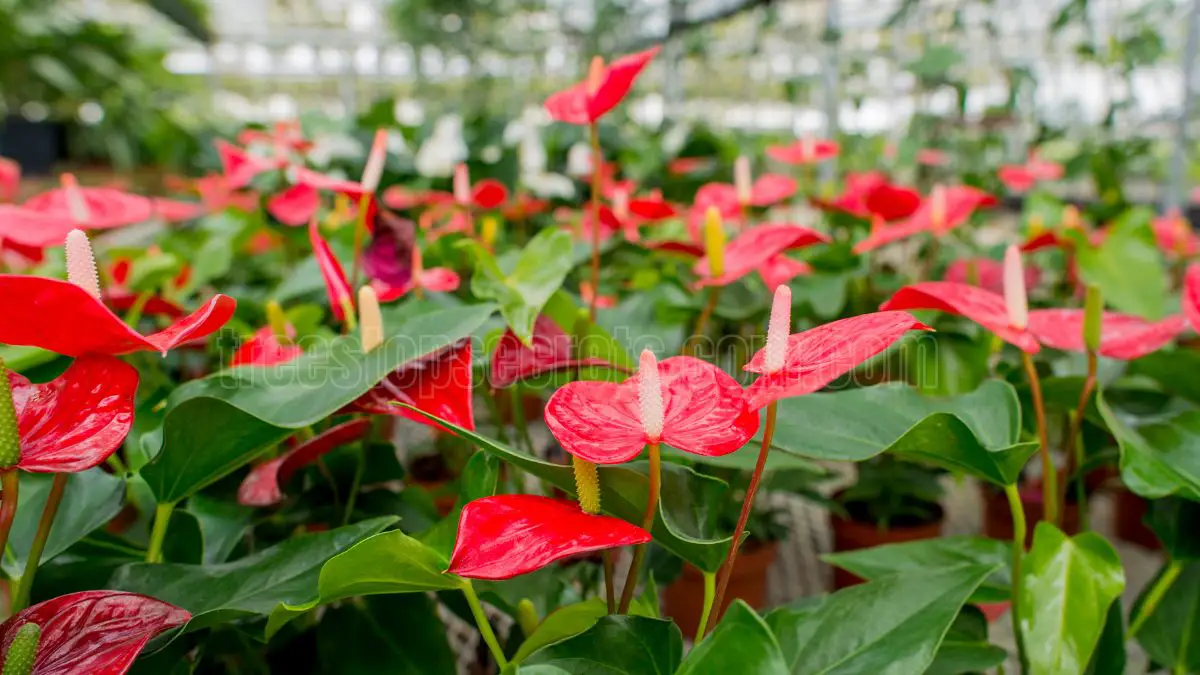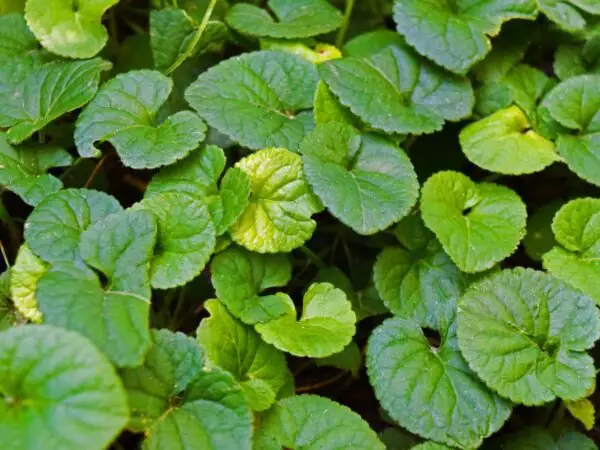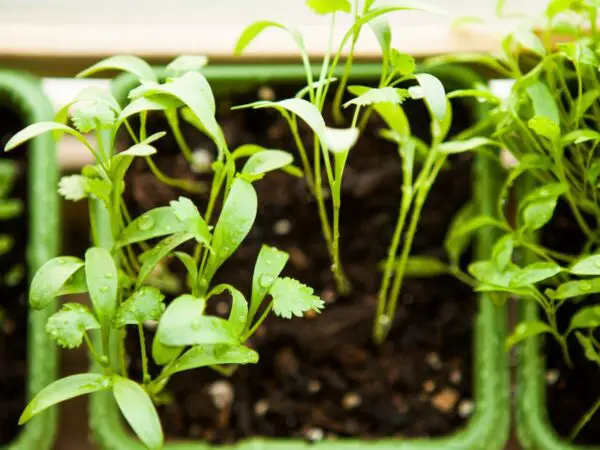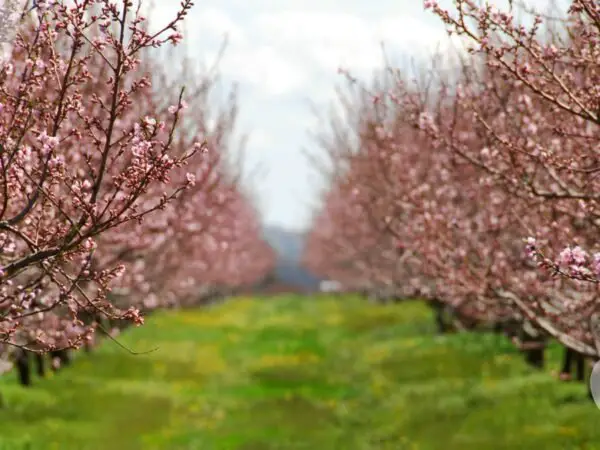Anthurium plant care consists of giving optimal conditions, watering, and lighting for these colorful plants to flourish. With their shiny foliage and distinctive flowers, anthuriums are a favorite with houseplant lovers across Los Angeles and the world.
You want to ensure your anthurium remains as healthy as possible, so you should be using well-draining soil and keeping a warm, humid environment. Consistent watering is important, but be careful not to overwater, or you risk root rot.
Positioning your plant in bright, indirect light is best and will keep it thriving. This guide will outline practical tips for proper anthurium care, ensuring your plant remains a stunning centerpiece in your home.
Key Takeaways
- As a result of their tropical origin, anthuriums love bright indirect light and humidity levels above 50%. Putting them close to windows, out of direct sun, will keep them happy.
- These plants are relatively low maintenance and can purify indoor air, making them a great choice for home decor while improving indoor air quality.
- Besides caring for their growing needs, you’ll want to be aware of their toxicity to pets and children. Always keep anthuriums out of reach to avoid any chance that they may be ingested.
- Watering consistently is important, so test the soil moisture each time before watering to prevent overwatering. Be prepared to change your watering schedule with the season climate shifts.
- If you want your anthuriums to thrive, feed them once a month with a nitrogen-rich fertilizer throughout the growing season. In winter, reduce feed to keep them healthy and happy.
- Watch for pests such as mealybugs and spider mites, and ensure good air circulation to avoid fungal diseases. Preventive maintenance regular inspections allow building managers to identify and address problems early.
Understanding Anthurium Plants
Anthuriums are tropical plants known for their unique blooms and heart-shaped leaves. Their long-lasting, heart-shaped blooms are typically in vivid shades of red, pink, or white. With some species displaying unique leaf shapes, they are a top pick among houseplant enthusiasts.
These plants are some of the most versatile. They adapt well to varying indoor conditions, making them attractive aesthetic accents in residential and commercial spaces alike.
What is an Anthurium?
Anthuriums are members of the family Araceae and are characterized by their unusual modified leaves, or spathes. These spathes cover the true flowers, contributing to their breathtaking beauty.
A. Reanum and A. Scherzerianum are particularly notable for their respective uniqueness. From subtle leaf shape to vibrant floral color, they provide plant lovers an abundance of variety to suit individual tastes.
Why Choose Anthuriums for Your Home?
Create a warm, welcoming space. The aesthetic appeal of anthuriums comes from their bright flowers and wide leaves, adding to a beautiful and inviting environment.
They have air-purifying features that contribute to enhanced air quality indoors. Anthuriums are low-maintenance houseplants.
Since they thrive in humidity above 50-60% and enjoy 65-80°F temperatures, they are an ideal plant for beginners and experts alike.
Toxicity and Safety Considerations
Although anthuriums are very lovely, their toxic compounds can severely affect pets and humans when consumed. It is best to keep them away from children and pets to reduce the chance of exposure or irritation.
By housing anthuriums out of reach, you can enjoy these beautiful plants without concern.
Optimal Conditions for Anthurium Growth
Successfully growing anthurium houseplants begins with providing ideal conditions that mimic their native habitat. Understanding the right light, humidity, temperature, and watering methods is crucial for ensuring these resilient plants bloom beautifully and thrive.
1. Ideal Light Requirements for Anthuriums
Anthuriums thrive with six or more hours of bright, indirect light each day. This level of light ensures your Anthurium will grow strong and bloom beautifully. Direct sunlight may burn the leaves, causing permanent harm.
To achieve consistent light exposure, you may want to rotate the plant every so often to make sure all sides get enough light.
2. Perfect Humidity and Temperature Levels
Keeping humidity levels above 50% is an important factor in growing healthy anthuriums. Keep them happy. Ideal temperatures are 65°F to 80°F.
Ideal conditions support growth and flowering, but temperatures below 60°F induce stress. In addition to natural humidity sources, a humidifier is an easy way to increase humidity over the drier months.
Instead, put pebble trays filled with water under your pots.
3. Watering Techniques for Different Climates
Make sure to check soil moisture before watering since overwatering can cause root rot. Usually, you’ll only need to water once weekly, though this can be adjusted for seasonal changes.
Give it a good soaking until water runs out the bottom of the pot. Allow the first two inches of soil to dry out between waterings.
Fertilization and Maintenance Strategies
Proper fertilization is key to ensuring healthy growth and vigorous blooms of anthuriums. A balanced approach ensures plants receive all of the nutrients they require. This is particularly the case for nitrogen, as this nutrient is particularly important to leaf development and plant vigor.
Choosing the appropriate fertilizer specifically formulated for anthuriums to foster healthy growth will ensure they thrive and produce more blooms.
1. Best Fertilizers for Thriving Anthuriums
Anthuriums do best with fertilizers that are rich in nitrogen, particularly throughout the growing season. Go for a good all-liquid fertilizer, like our 20-20-20 formula, which gives your plant everything it needs.
Diluting fertilizer to at least half the recommended strength will help avoid nutrient burn and promote healthy root growth. Brands such as Miracle-Gro or Osmocote provide varieties designed for flowering plants which are excellent choices for your anthurium’s needs.
2. Frequency of Fertilization for Blooming Success
A once-a-month schedule for fertilization in the spring and summer provides optimal blooming. This cycle of fertilization not only aids in correcting nutrient deficiencies but encourages lush growth.
It is recommended to cut back on or stop fertilization completely during the plant’s dormant winter months so that the plant can take a break. By keeping an eye on how the plant responds, you can tweak the frequency to suit the plant’s needs, maximizing its health year-round.
3. Essential Maintenance Practices for Longevity
Fertilization and other essential maintenance practices ensure healthy anthuriums that last for many weeks. Pinching off spent flowers will encourage new blooms and dusting the leaves once a month will keep them looking glossy and new.
Giving the plant a winter rest period lets it recharge its batteries, getting it ready for springtime output.
Common Pests and Diseases
Beautiful, durable, and adaptable, anthurium flowers are nevertheless prone to pests and diseases. Knowing what to look for is the first step to keeping these flowering plants healthy and colorful.
1. Identifying Common Pests Affecting Anthuriums
Mealybugs, spider mites, and aphids are common pests that afflict anthuriums.
Mealybugs are small, round, white, cottony-looking masses found on plant leaves and stems that cause leaf yellowing, browning, and drooping.
Spider mites, which can be identified by their webbing, suck on sap from the leaves making them turn yellow.
Aphids are easy to identify due to their tiny size, and the fact that they tend to cluster on new growth, causing curled leaves.
It is important to inspect your plants regularly, looking especially on the undersides of leaves and stems to catch these problems early on.
2. Diagnosing and Treating Fungal Issues
Fungal diseases like anthracnose and root rot can be devastating to anthuriums. These are usually the result of overwatering or inadequate airflow.
Symptoms include small, dark spots on leaves and soft, mushy roots. Treatment for these types of fungal issues usually consists of applying fungicides and changing your watering habits.
Fungal infections thrive in dampness, so improving air circulation and avoiding overhead watering can go a long way.
3. Prevention Strategies for Pest Infestations
Keeping humidity and temperatures balanced can prevent pests from infesting your plants.
Applying neem oil or horticultural soap are great preventive measures to take.
Regularly cleaning up your plants and surrounding areas to remove any debris or dead leaves will help reduce pest attraction.
Practical Tips for Indoor Anthurium Care
To create the best possible indoor environment for your anthurium houseplants, it’s important to know what they require. Since these resilient plants naturally grow in warm, humid environments, thoughtful placement and anthurium care routines are essential in helping them flourish indoors.
1. Best Practices for Indoor Placement
Anthuriums do best placed close to bright windows, getting indirect light exposure. Since direct sunlight will burn their leaves, it is best to place them a few feet away from the window.
In addition, you need to protect them from cold drafts and heat sources such as radiators or air conditioning vents. This step is important to ensure their fragile wellbeing.
For increased humidity, place anthuriums in clusters with other plants. This beautiful arrangement creates a microclimate that holds moisture and helps all the plants in the community thrive.
2. Pruning and Cleaning Techniques
Regular pruning is an important step to keeping anthuriums attractive as well as healthy. Cut off the old, yellow or brown leaves to make way for new growth.
Cleaning their leaves regularly with a damp cloth not only removes dust but maximizes photosynthesis so your plant can prosper. Always prune with sterile tools to avoid spreading disease and keep your plants thriving.
3. Air Circulation and Its Impact on Growth
As with any indoor plant, proper air circulation is key in combating fungal diseases. To improve circulation, you might want to set up oscillating fans or regularly crack windows open.
Don’t overcrowd plants. Since proper ventilation is key to preventing disease, try not to overcrowd plants so they can have good air circulation and not trap moisture.
Outdoor Anthurium Growing Guide
With the right environmental conditions and long-term maintenance, anthurium houseplants can thrive outside. These lush, tropical plants, often referred to as flamingo flowers, are popular across the country, brightening temperate gardens with colorful foliage and beautiful blooms.
1. Preparing Your Garden for Anthuriums
Choosing the perfect spot is key for outdoor anthuriums. They enjoy locations with indirect light. This especially includes spots under larger trees or manmade structures that provide cover during the most intense heat of the day. This is to avoid leaf scorch.
Since root rot is a common issue for anthuriums, well-draining soil is a must. Incorporate plenty of organic material such as compost to enrich soil, promoting vigorous growth. The ideal soil pH should be in the 5.5 to 6.5 range.
2. Seasonal Care for Outdoor Anthuriums
When it’s warmer, plants will need more frequent watering, but you should allow the soil to dry a little before watering again. Fertilization, applying a balanced fertilizer at six- to eight-week intervals, ensures vigorous foliage.
Keep a close eye on pests such as aphids or spider mites that can flourish in warm conditions.
Mulching is a great way to both retain moisture and regulate soil temperature, giving your outdoor anthuriums a more stable environment to grow in.
3. Companion Plants for Anthuriums
Selecting companion plants that are compatible with anthuriums improves the look of your garden and the health of your plants. Try combining anthuriums with other tropicals, like bromeliads or ferns that do well in the same environments.
A mixture of different types of plants will look more interesting and beautiful and will lead to better pollination and pest resistance.
Repotting and Potting Mix Recommendations
Repotting anthurium houseplants is an important step to ensuring their health and growth. When these resilient plants become root-bound or the potting soil breaks down, repotting allows your flowering plants access to new nutrients and room for growth in the soil, enhancing their overall health and beautiful blooms.
1. When to Repot Your Anthurium
Identifying root-bound situations is one of the most helpful signs that it’s time to repot. Roots might look like they’re crammed in there or circling the inside of the pot, which stunts their development.
To minimize stress on the plant, repot during the growing season—spring or early summer are best. If you start to notice the soil compacting, it’s time for a change of scenery. If you notice any mold or decay, it’s time for a replacement.
2. Choosing the Right Potting Mix for Drainage
Providing the right potting mix is important for anthuriums’ success. Adding something like perlite or orchid bark to your soil mixture creates more space between components, improves drainage and aeration, and helps prevent root rot.
Proper drainage is crucial. It avoids the waterlogged roots that develop due to a lack of drainage, which causes rot. Steer clear of dense soils that hold in too much water, such as clay, because they’ll choke the roots, stunting their development.
3. Step-by-Step Repotting Guide
- Select a pot that is one size larger.
- Prepare a well-draining potting mix.
- Gently remove the plant from its current pot.
- Loosen any tightly bound roots.
- Put the plant in its new pot and top it off with new soil.
- Water lightly to settle the mix around the roots.
Be gentle with the roots of your anthurium houseplants as you do this to avoid causing harm.
Diagnosing Nutrient Deficiencies
As colorful, long-lasting anthurium flowers, these resilient plants need a variety of nutrients to thrive. Identifying nutrient deficiencies is an important first step to keeping your anthurium houseplants happy and healthy. This part addresses the most prevalent nutrient deficiencies, their symptoms, and how to change the way you care for these beautiful blooms.
1. Signs of Nutrient Deficiencies in Anthuriums
The most common symptoms of a nutrient deficiency are yellowing leaves, slowed growth and leaf drop. Yellowing leaves can be a sign of nitrogen deficiency. Stunted growth is a sign of phosphorus or potassium deficiency.
It’s key to distinguish these signs from other maladies like overwatering or bugs. For example, if the leaves are yellow and they’re still firm, it’s more likely a nutrient deficiency than root rot. Keeping a close watch on your plant’s health is the most effective way to identify deficiencies before they become serious, ensuring you can act fast.
2. Adjusting Care Based on Deficiency Symptoms
Once deficiencies are identified, practical adjustments to care practices should be made. Changing irrigation and fertilization practices can make a big difference on recovery.
For instance, if you suspect nitrogen deficiency, include a balanced fertilizer that is high in nitrogen. Monitoring the plant’s response is crucial. Take notes on any changes in leaf discoloration or growth in the weeks to come.
This practice will give you insight into what your plant needs right now and will lead to more thoughtful, longer-term care.
Conclusion
The effort that goes into caring for anthurium plants is well worth it, considering their stunning blooms and foliage. Concentrate on making sure that they get the best conditions when it comes to light, humidity, and temperature so they can thrive. Inspect often for pests and diseases to ensure the health of your plants. Apply a balanced fertilizer and fresh potting mix to help meet their high demands. Once you notice the signs of nutrient deficiencies, take immediate action to restore nutritional balance. Whether you’re growing them outside or in, these beauties are sure to light up any place.
Educate yourself on how to properly care for your anthuriums and they will thrive. Get started by implementing these simple tips and see your plants flourish! Happy plant parenthood out there!
Frequently Asked Questions
How often should I water my anthurium plant?
Watering anthurium houseplants should be done when the top inch of soil is dry. Generally, these resilient plants require watering about once a week to once every two weeks, depending on humidity and temperature.
What light conditions are best for anthurium plants?
Light requirements for anthurium houseplants are crucial; almost all anthuriums thrive in bright, indirect light, as direct sunlight may burn their glossy foliage.
How can I tell if my anthurium is getting enough nutrients?
One glaring sign of nutrient deficiency in anthurium houseplants is yellowing leaves. To promote healthy plant growth, make sure you’re fertilizing these resilient plants once a month during their growing season with a balanced fertilizer!
What are common pests that affect anthurium plants?
What are common pests that affect anthurium plants.
Preventative measures
Regularly inspect your anthurium plant and treat any infestations promptly with either insecticidal soap or neem oil.
Can anthuriums be grown outdoors in Los Angeles?
Anthuriums, also known as flamingo flowers, thrive outdoors in Los Angeles when given partial shade and protection from direct afternoon sunlight to prevent leaf scorch.
How do I repot my anthurium plant?
Ideally, you should repot your anthurium houseplant every 2-3 years or whenever it becomes rootbound. Provide fresh soil to support the growth of beautiful blooms. When repotting your anthurium, use a lightweight, well-draining potting mix, preferably one formulated for orchids or other resilient plants.
What should I do if my anthurium has brown leaf tips?
Brown leaf tips on anthurium houseplants can indicate underwatering, insufficient humidity, or excessive direct sunlight. To encourage healthy plant growth, water less often and increase humidity.
Image Source: Paid image from CANVA





